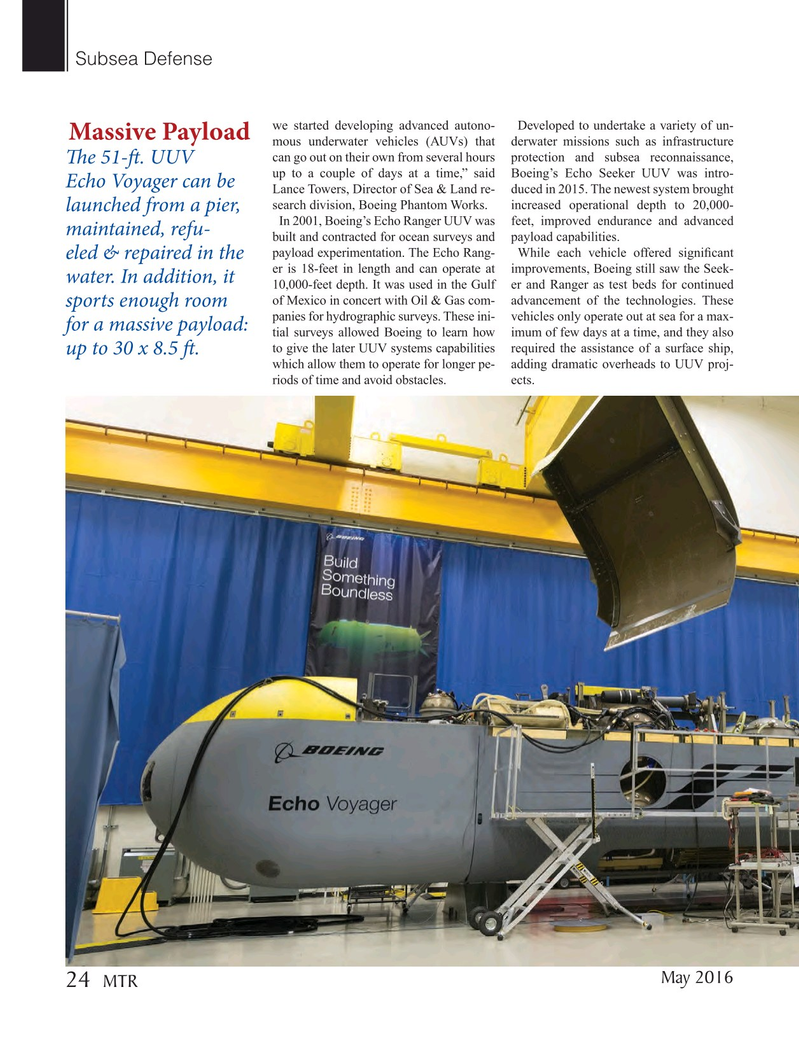
Page 24: of Marine Technology Magazine (May 2016)
Underwater Defense
Read this page in Pdf, Flash or Html5 edition of May 2016 Marine Technology Magazine
Subsea Defense we started developing advanced autono- Developed to undertake a variety of un-
Massive Payload mous underwater vehicles (AUVs) that derwater missions such as infrastructure can go out on their own from several hours protection and subsea reconnaissance,
T e 51-f . UUV up to a couple of days at a time,” said Boeing’s Echo Seeker UUV was intro-
Echo Voyager can be
Lance Towers, Director of Sea & Land re- duced in 2015. The newest system brought search division, Boeing Phantom Works. increased operational depth to 20,000- launched from a pier,
In 2001, Boeing’s Echo Ranger UUV was feet, improved endurance and advanced maintained, refu- built and contracted for ocean surveys and payload capabilities. payload experimentation. The Echo Rang- While each vehicle offered signi? cant eled & repaired in the er is 18-feet in length and can operate at improvements, Boeing still saw the Seek- water. In addition, it 10,000-feet depth. It was used in the Gulf er and Ranger as test beds for continued of Mexico in concert with Oil & Gas com- advancement of the technologies. These sports enough room panies for hydrographic surveys. These ini- vehicles only operate out at sea for a max- for a massive payload: tial surveys allowed Boeing to learn how imum of few days at a time, and they also to give the later UUV systems capabilities required the assistance of a surface ship, up to 30 x 8.5 f .
which allow them to operate for longer pe- adding dramatic overheads to UUV proj- riods of time and avoid obstacles. ects.
May 2016 24 MTR
MTR #4 (18-33).indd 24 4/25/2016 10:33:52 AM

 23
23

 25
25
